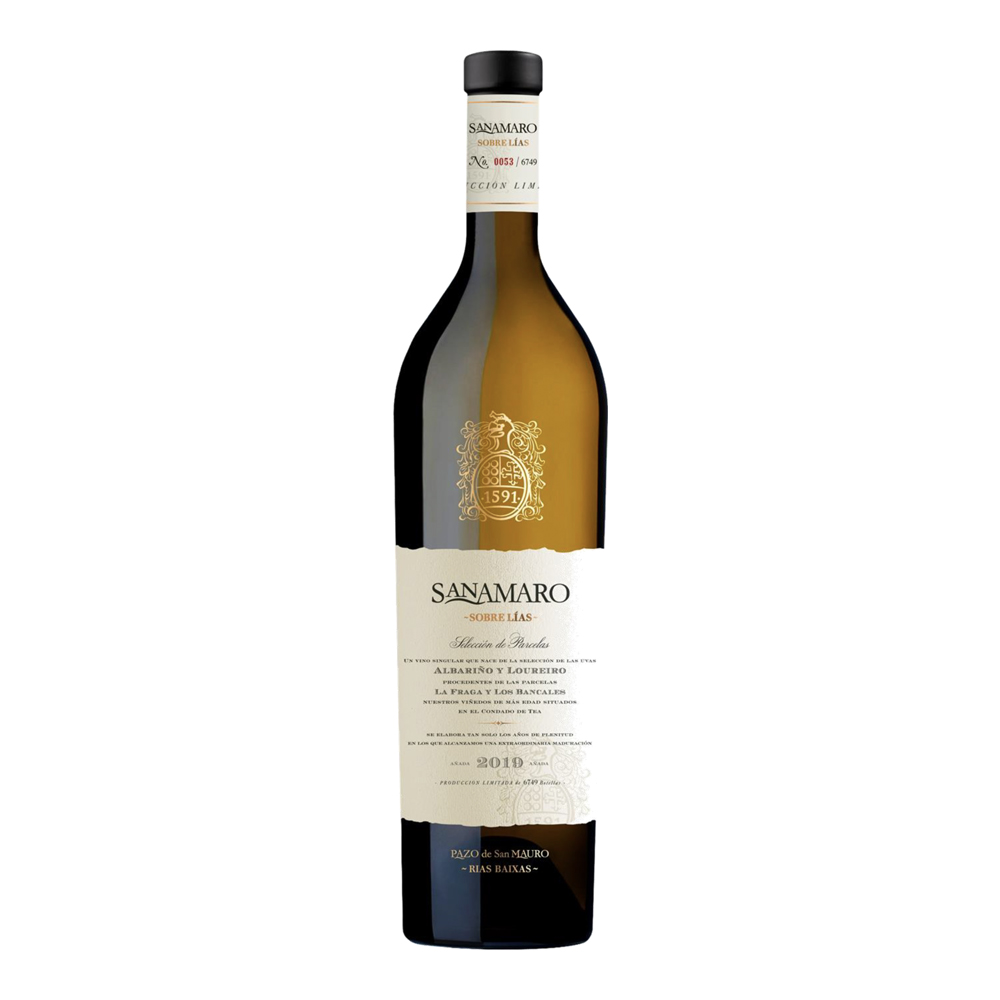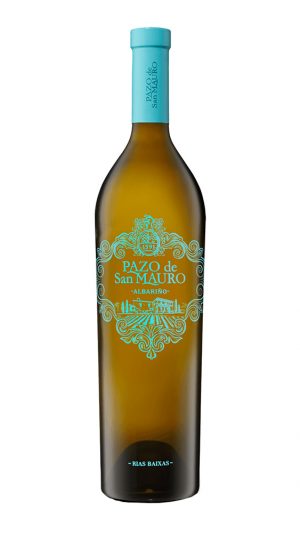Pazo de San Mauro Sanamaro Sobre Lias 2021
Type: White
Country: Spain
Region: Rias Baixas
Grape Variety: 50% Albariño, 50% Loureiro
Alcohol Percentage: 12.5%
Viticulture: Vegan Friendly
Climate: Atlantic climate with mild rainfall
Terroir: The vineyards extend on rolling banks of the river Miño creating a natural amphitheater, bathed in extraordinary sunlight during the midday hours.
The vines are planted on trellises so that the fruit, in low-yield production, grow in optimum conditions and reaching their peak quality
Ageing: Hand-harvested and selected in the vineyard from only the best bunches of the La Fraga plot. Two-thirds of the grapes are destemmed and put through low-temperature maceration while the other one-third is pressed in whole bunches. Then, 90% of the juice is vinified in first and second-year French oak vats, while the other 10% is vinified in cocciopesto amphorae. Subsequently, the wine rests 6 months on the lees, with manual batonnage, and one year in the bottle before being released
Color: Pale yellow robe
Nose: A wine of great personality and elegance. On the nose, the varietal aromas of Albariño and Loureiro are expressed with frankness, intensity and clarity.
Palate: An extraordinarily ample, fruity and silky wine, with hints of dried fruits and white flowers. Fresh and persistent
About the Winery:
Pazo de San Mauro originally belonged to the noble Spanish and Portuguese Pereira de Castro family, descendants of King Sancho I of Portugal. It was built in 1591 with a wine press room..
The winery is located in Condado de Tea, the southernmost and sunniest area of DO Rías Baixas. It has an exceptional microclimate with Atlantic influences noted for its gentle temperatures and heavy rainfall. It also has the necessary number of ideal daylight hours that ensure the vines in Pazo de San Mauro mature fully and early. The vines are over 40 years old and cover a 30 ha of pebble plots by the banks of the river Miño, creating a natural amphitheatre and surrounding it with magic and mystery. The grapevines are semi-trellised so that the fruit, of which very little is produced, can grow in the best possible conditions and achieve the highest levels of quality.


